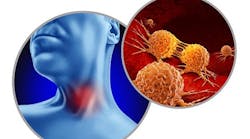The CDC estimates 71% of adults 65 and older have periodontal disease, and nearly half of patients 30 years and older show signs of it.1 These are the latest statistics from literature published in 2018. As a practicing hygienist, I can assure you that the current numbers of periodontally involved patients are much higher than they were prepandemic.
Periodontal disease is multifactorial, and the complexities that have resulted from the ongoing COVID pandemic—e.g., social isolation, increased mouth breathing, increased oxidative stress, and many more factors—further increase our patients’ periodontal risks.
When treating periodontally involved patients, we need to think comprehensively about the root cause of the disease. The patient may be battling any one of the red-complex bacteria that increase their risk of periodontal disease and tooth decay. Some innovations allow us to optimize our treatment outcomes both chairside and at home.
The truth about P. gingivalis
P. gingivalis is also known as the “keystone” pathogen due to its destructive properties and high virulence factors even in low concentrations.2 “Periodontal pathogens are associated with or linked to 16 systemic diseases to date, including cardiovascular disease, diabetes, respiratory disease, chronic obstructive pulmonary disease, rheumatoid arthritis, gastrointestinal disorders, Alzheimer’s disease, osteoporosis, kidney disease, preterm birth, preterm birth weight, and cancer.”3 Therefore, the preventive armamentarium that we use chairside and in the patient’s home-care regimen must be evidence-based and aimed to target the type and levels of bacteria present.
Chairside protocol for periodontal disease
The best way to manage periodontal disease is to understand the levels and types of bacteria we treat. Like blood work, once we understand what the patient presents with, we can determine a comprehensive treatment plan to help eliminate a root cause factor in the periodontal disease process. Our hygiene protocols should include a way to target the complex bacteria, such as subgingival irrigation with a povidone-iodine product, low-level bacterial reduction therapy with a laser, and subgingival decontamination with subgingival powders such as erythritol.4-6
Additionally, it is essential to screen the patient for airway dysfunctions, such as mouth breathing and sleep apnea, as these can contribute to increased bacterial resistance.7
Home-care recommendations
Conducting motivational interviewing chairside is effective in preventive oral hygiene efforts. Once we identify exactly what the patient will use at home, we can help establish the why behind our recommendations. Patient-specific recommendations based on the individual’s disease process is critical to long-term periodontal success.3 Dental professionals must commit to stay up-to-date with emerging science.
You may also be interested in ... The first steps to treating the root cause of dysbiosis
Another factor in home-care recommendations for periodontally involved patients is pH balance. Clinical studies demonstrate that a patient with red-complex bacteria has a more acidic resting pH in the mouth.8 The clinician should choose products with ingredients that help promote remineralization, such as calcium, phosphate, xylitol, fluoride, hydroxyapatite, and CPP-ACP. Implementing products such as probiotics to repopulate the good bacteria post-SCRP therapy is a simple method to encourage symbiosis.
Put “care” into patient care
It is often said that people don’t care how much you know until they know how much you care. I find this is true with patients; an established patient rapport is the key to unlocking patient compliance. Historically, dentistry has been centered around a fear-based model. “If you don’t brush and floss, you will get gum disease!” This may be true, but oral health is more than brushing and flossing. It’s how we train biofilm to work for us in the mouth instead of trying to eliminate all bacteria. In some cases, brushing and flossing will be enough for a patient. Patients with dysbiosis need more support. These are patients who have minimal biofilm when disclosed, little to no calculus, and a meticulous home-care routine—yet they have 5–7 mm periodontal probing levels. Perhaps those patients’ oral pathogens have become resistant to products they’re using, or perhaps a systemic condition has increased the severity of the periodontal disease. Social habits, such as smoking, can also contribute to keeping the patient in a state of dysbiosis. The partnership and trust from the patient—as well as chairside testing to determine the level and type of red-complex bacteria—are critical in disease management to achieve a more accurate assessment of the root cause of the patient’s periodontal disease.
You may also be interested in ... It's all about that biofilm
One of the most rewarding parts of my career is transforming a patient’s mindset around their preventive care. Many patients believe that because their parents had periodontal disease, they’re automatically going to have it too. As preventive oral health specialists, we can equip patients with the knowledge and tools they need to reduce the risk factors they have control over in the multifactorial process of periodontal disease. There is no greater feeling than when patients achieve oral health under our care. Let’s stop the progression of periodontal disease together with a comprehensive look at the root cause.
Editor's note: This article appeared in the October 2023 print edition of RDH magazine. Dental hygienists in North America are eligible for a complimentary print subscription. Sign up here.
References
- Gum disease. Centers for Disease Control and Prevention. Reviewed November 18, 2020. https://www.cdc.gov/oralhealth/fast-facts/gum-disease/index.html
- Olsen I, Lambris JD, Hajishengallis G. Porphyromonas gingivalis disturbs host-commensal homeostasis by changing complement function. J Oral Microbiol. 2017;9(1):1340085. doi:10.1080/20002297.2017.1340085
- Warner T. Define periodontal disease by its pathogens. The American Academy for Oral Systemic Health. January 3, 2018. https://www.aaosh.org/connect/periodontal-disease-pathogens
- Moritz A, Schoop U, Goharkhay K, et al. Treatment of periodontal pockets with a diode laser. Lasers Surg Med. 1998;22(5):302-311. doi:10.1002/(sici)1096-9101(1998)22:5
- Sindhura H, Harsha RH, Shilpa RH. Efficacy of subgingival irrigation with 10% povidone-iodine as an adjunct to scaling and root planing: a clinical and microbiological study. Indian J Dent Res. 2017;28(5):514-518. doi:10.4103/ijdr.IJDR_497_15
- Abdulbaqi HR, Shaikh MS, Abdulkareem AA, Zafar MS, Gul SS, Sha AM. Efficacy of erythritol powder air-polishing in active and supportive periodontal therapy: a systematic review and meta-analysis. Int J Dent Hyg. 2022;20(1):62-74. doi:10.1111/idh.12539
- Surtel A, Klepacz R, Wysokinska-Miszczuk J. The influence of breathing mode on the oral cavity. Pol Merkur Lekarski. 2015;39(234):405-407. Polish.
- Baliga S, Muglikar S, Kale R. Salivary pH: a diagnostic biomarker. J Indian Soc Periodontol. 2013;17(4):461-465. doi:10.4103/0972-124X.118317






